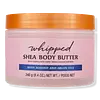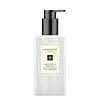What's inside
What's inside
 Key Ingredients
Key Ingredients

No key ingredients
 Benefits
Benefits

 Concerns
Concerns

 Ingredients Side-by-side
Ingredients Side-by-side

Water
Skin ConditioningGlycerin
HumectantGlyceryl Stearate
EmollientCaprylic/Capric Triglyceride
MaskingButyrospermum Parkii Butter
Skin ConditioningPEG-100 Stearate
Parfum
MaskingPhenoxyethanol
PreservativeMyristyl Myristate
EmollientDimethicone
EmollientCetearyl Alcohol
EmollientAcrylates/C10-30 Alkyl Acrylate Crosspolymer
Emulsion StabilisingCaprylyl Glycol
EmollientSodium Hydroxide
BufferingEthylhexylglycerin
Skin ConditioningDisodium EDTA
Sodium Chloride
MaskingRosa Canina Fruit Oil
EmollientArgania Spinosa Kernel Oil
EmollientLimonene
PerfumingLinalool
PerfumingCI 42090
Cosmetic ColorantCI 14700
Cosmetic ColorantWater, Glycerin, Glyceryl Stearate, Caprylic/Capric Triglyceride, Butyrospermum Parkii Butter, PEG-100 Stearate, Parfum, Phenoxyethanol, Myristyl Myristate, Dimethicone, Cetearyl Alcohol, Acrylates/C10-30 Alkyl Acrylate Crosspolymer, Caprylyl Glycol, Sodium Hydroxide, Ethylhexylglycerin, Disodium EDTA, Sodium Chloride, Rosa Canina Fruit Oil, Argania Spinosa Kernel Oil, Limonene, Linalool, CI 42090, CI 14700
Water
Skin ConditioningAloe Barbadensis Leaf Extract
EmollientCaprylic/Capric/Myristic/Stearic Triglyceride
EmollientButylene Glycol
HumectantHydrogenated Polyisobutene
EmollientPPG-5-Ceteth-20
EmulsifyingParfum
MaskingCetyl Acetate
EmollientCocos Nucifera Oil
MaskingPEG-40 Stearate
EmulsifyingGlyceryl Stearate
EmollientCrithmum Maritimum Extract
Skin ConditioningMaris Sal
Skin ConditioningDimethicone
EmollientSorbitan Stearate
EmulsifyingGlyceryl Laurate
EmollientJojoba Alcohol
EmollientIsopropyl Jojobate
EmollientJojoba Esters
EmollientCaprylyl Glycol
EmollientCaprylic/Capric Triglyceride
MaskingSodium Hyaluronate
HumectantHexylene Glycol
EmulsifyingCarbomer
Emulsion StabilisingTromethamine
BufferingBHT
AntioxidantDisodium EDTA
Butylphenyl Methylpropional
PerfumingCitral
PerfumingLimonene
PerfumingLinalool
PerfumingGeraniol
PerfumingCitronellol
PerfumingPhenoxyethanol
PreservativeWater, Aloe Barbadensis Leaf Extract, Caprylic/Capric/Myristic/Stearic Triglyceride, Butylene Glycol, Hydrogenated Polyisobutene, PPG-5-Ceteth-20, Parfum, Cetyl Acetate, Cocos Nucifera Oil, PEG-40 Stearate, Glyceryl Stearate, Crithmum Maritimum Extract, Maris Sal, Dimethicone, Sorbitan Stearate, Glyceryl Laurate, Jojoba Alcohol, Isopropyl Jojobate, Jojoba Esters, Caprylyl Glycol, Caprylic/Capric Triglyceride, Sodium Hyaluronate, Hexylene Glycol, Carbomer, Tromethamine, BHT, Disodium EDTA, Butylphenyl Methylpropional, Citral, Limonene, Linalool, Geraniol, Citronellol, Phenoxyethanol
Ingredients Explained
These ingredients are found in both products.
Ingredients higher up in an ingredient list are typically present in a larger amount.
This ingredient is an emollient, solvent, and texture enhancer. It is considered a skin-softener by helping the skin prevent moisture loss.
It helps thicken a product's formula and makes it easier to spread by dissolving clumping compounds.
Caprylic Triglyceride is made by combining glycerin with coconut oil, forming a clear liquid.
While there is an assumption Caprylic Triglyceride can clog pores due to it being derived from coconut oil, there is no research supporting this.
Learn more about Caprylic/Capric TriglycerideCaprylyl Glycol is a humectant and emollient, meaning it attracts and preserves moisture.
It is a common ingredient in many products, especially those designed to hydrate skin. The primary benefits are retaining moisture, skin softening, and promoting a healthy skin barrier.
Though Caprylyl Glycol is an alcohol derived from fatty acids, it is not the kind that can dry out skin.
This ingredient is also used as a preservative to extend the life of products. It has slight antimicrobial properties.
Learn more about Caprylyl GlycolDimethicone is a type of synthetic silicone created from natural materials such as quartz.
What it does:
Dimethicone comes in different viscosities:
Depending on the viscosity, dimethicone has different properties.
Ingredients lists don't always show which type is used, so we recommend reaching out to the brand if you have questions about the viscosity.
This ingredient is unlikely to cause irritation because it does not get absorbed into skin. However, people with silicone allergies should be careful about using this ingredient.
Note: Dimethicone may contribute to pilling. This is because it is not oil or water soluble, so pilling may occur when layered with products. When mixed with heavy oils in a formula, the outcome is also quite greasy.
Learn more about DimethiconeDisodium EDTA plays a role in making products more stable by aiding other preservatives.
It is a chelating agent, meaning it neutralizes metal ions that may be found in a product.
Disodium EDTA is a salt of edetic acid and is found to be safe in cosmetic ingredients.
Learn more about Disodium EDTAGlyceryl Stearate is a mix of glycerin and stearic acid.
It is used to stabilize the mixing of water and oil ingredients. By preventing these ingredients from separating, it can help elongate shelf life. It can also help thicken the product's texture.
As an emollient, it helps soften skin and supports barrier-replenishing ingredients.
In cosmetics, Glyceryl Stearate is often made from vegetable oils or synthetically produced.
This ingredient may not be fungal-acne safe
Fun fact: The human body also creates Glyceryl Stearate naturally.
Learn more about Glyceryl StearateLimonene is a fragrance that adds scent and taste to a formulation.
It's found in the peel oil of citrus fruits and other plants such as lavender and eucalyptus. The scent of limonene is generally described as "sweet citrus".
Limonene acts as an antioxidant, meaning it helps neutralize free radicals.
When exposed to air, oxidized limonene may sensitize the skin. Because of this, limonene is often avoided by people with sensitive skin.
The term 'fragrance' is not regulated in many countries. In many cases, it is up to the brand to define this term. For instance, many brands choose to label themselves as "fragrance-free" because they are not using synthetic fragrances. However, their products may still contain ingredients such as essential oils that are considered a fragrance.
Learn more about LimoneneLinalool is a fragrance and helps add scent to products. It's derived from common plants such as cinnamon, mint, citrus, and lavender.
Like Limonene, this ingredient oxidizes when exposed to air. Oxidized linalool can cause allergies and skin sensitivity.
This ingredient has a scent that is floral, spicy tropical, and citrus-like.
Learn more about LinaloolParfum is a catch-all term for an ingredient or more that is used to give a scent to products.
Also called "fragrance", this ingredient can be a blend of hundreds of chemicals or plant oils. This means every product with "fragrance" or "parfum" in the ingredients list is a different mixture.
For instance, Habanolide is a proprietary trade name for a specific aroma chemical. When used as a fragrance ingredient in cosmetics, most aroma chemicals fall under the broad labeling category of “FRAGRANCE” or “PARFUM” according to EU and US regulations.
The term 'parfum' or 'fragrance' is not regulated in many countries. In many cases, it is up to the brand to define this term.
For instance, many brands choose to label themselves as "fragrance-free" because they are not using synthetic fragrances. However, their products may still contain ingredients such as essential oils that are considered a fragrance by INCI standards.
One example is Calendula flower extract. Calendula is an essential oil that still imparts a scent or 'fragrance'.
Depending on the blend, the ingredients in the mixture can cause allergies and sensitivities on the skin. Some ingredients that are known EU allergens include linalool and citronellol.
Parfum can also be used to mask or cover an unpleasant scent.
The bottom line is: not all fragrances/parfum/ingredients are created equally. If you are worried about fragrances, we recommend taking a closer look at an ingredient. And of course, we always recommend speaking with a professional.
Learn more about ParfumPhenoxyethanol is a preservative that has germicide, antimicrobial, and aromatic properties. Studies show that phenoxyethanol can prevent microbial growth. By itself, it has a scent that is similar to that of a rose.
It's often used in formulations along with Caprylyl Glycol to preserve the shelf life of products.
Water. It's the most common cosmetic ingredient of all. You'll usually see it at the top of ingredient lists, meaning that it makes up the largest part of the product.
So why is it so popular? Water most often acts as a solvent - this means that it helps dissolve other ingredients into the formulation.
You'll also recognize water as that liquid we all need to stay alive. If you see this, drink a glass of water. Stay hydrated!
Learn more about Water